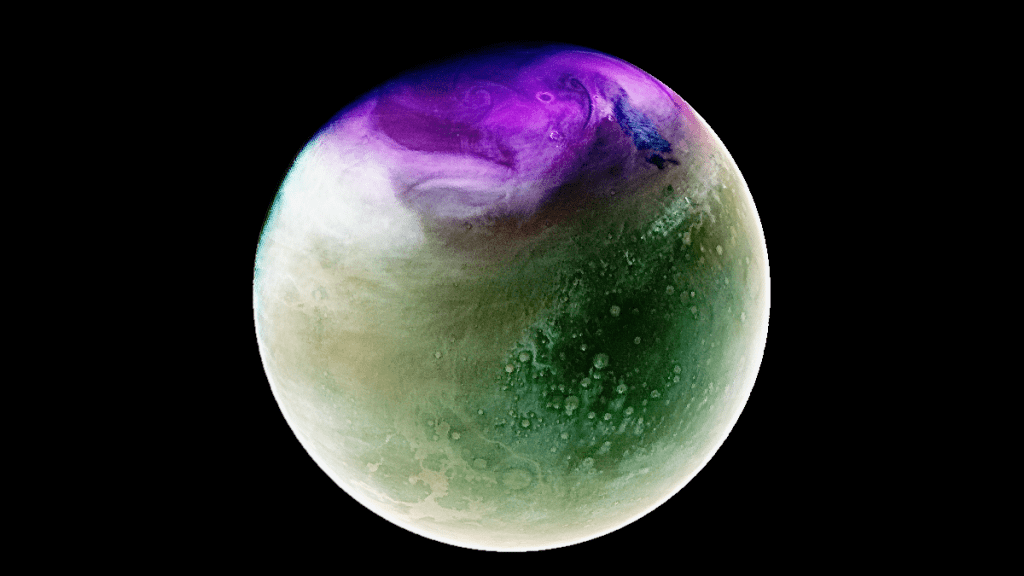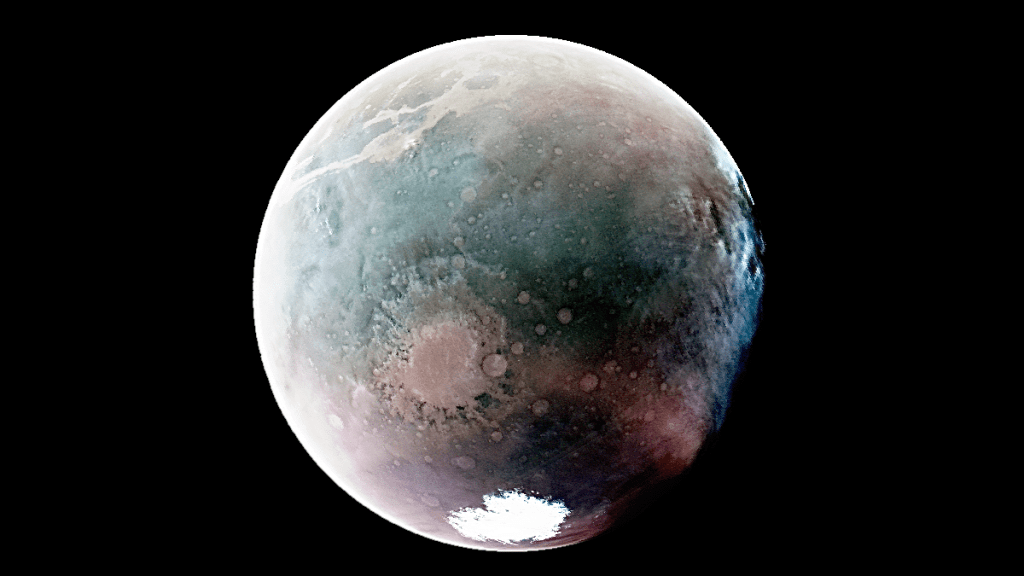 Source: NASA
Source: NASA On June 22nd, NASA unveiled two stunning ultraviolet images of Mars captured by the MAVEN mission. The NASA ultraviolet images of Mars showcase the planet’s atmosphere and surface features from almost opposite points in its orbit.
- The first image shows Mars’ southern hemisphere during its summer season.
- The second image captures Mars’ northern hemisphere during its harsh winter season.
- NASA has also announced the successful recycling of 98% of astronaut pee and sweat on the International Space Station
On June 22nd, NASA shared two stunning ultraviolet images of Mars taken by its MAVEN (Mars Atmosphere and Volatile EvolutioN) mission.
The NASA ultraviolet images of Mars, one snapped in July 2022 and the second in January 2023, showcase the planet at near opposite points along its orbit of the sun, potentially giving more insight into the red planet’s atmosphere and surface features.
The recorded measurements provided by MAVEN’s imaging instrument are invisible to the naked eye. As a result, the U.S. Space Agency translated them with varying brightness levels of three ultraviolet wavelength ranges: red, green, and blue. Atmospheric ozone appears in purple/pink, White clouds and hazes in white/blue, and Mars’ surface in a tan-like/green.

Mars almost takes twice as long to orbit the sun as Earth, so seasons up there last twice as long as the ones down here. The first picture (see picture above), from July 2022, shows Mars’ southern hemisphere during its summer season (closest to the sun). One of its deeper craters, The Argyre Basin, is at the bottom left and filled with haze (pale pink). Meanwhile, the vast canyons of Valles Marineris are in the top left and the southern polar ice cap can be seen at the bottom (white).
The second picture (see cover photo) from last January shows the planet’s northern hemisphere in its harsh winter season (at the farthest point in its orbit from the Sun). We can clearly see that the Ozone has enormously built up at the top (magenta). This is said to be due to an abundance of white clouds arriving during the winter’s chilly polar nights.
NASA’s MAVEN spacecraft entered Mars’ orbit in September 2014 (launched in 2013) on a mission to study Mars’ upper atmosphere, ionosphere, and its interactions with the Sun. Scientists want to understand how Mars lost its atmosphere millions of years ago. The NASA ultraviolet images of Mars help us understand the Martian atmospheric loss and may give insight into the history of Mars’ atmosphere and climate, liquid water, and habitability.
Continuing its winning streak, NASA achieved a technological milestone possibly redefining our approach to ventures into the great unknown. On June 25th, Space.com announced NASA’s successful recycling of 98% of astronaut pee and sweat on the ISS. the Environmental Control and Life Support System (ECLSS) utilized an improved Urine Processor Assembly (UPA) and a Brine Processor Assembly (BPA). The UPA distills urine to recover water, while the BPA extracts the remaining wastewater from the brine. The collected wastewater, along with moisture captured from the air and the crew’s breath, is processed through a Water Processor Assembly (WPA) to produce clean, drinkable water. This ensures a constant supply of potable water for the crew’s needs, surpassing municipal water standards on Earth.
These two accomplishments mark critical points of our journey in exploring the universe. The first will further our understanding of the planets in our system while the second will help minimize our presence in the cosmos as we explore to our heart’s content.
Inside Telecom provides you with an extensive list of content covering all aspects of the tech industry. Keep an eye on our Tech sections to stay informed and up-to-date with our daily articles.